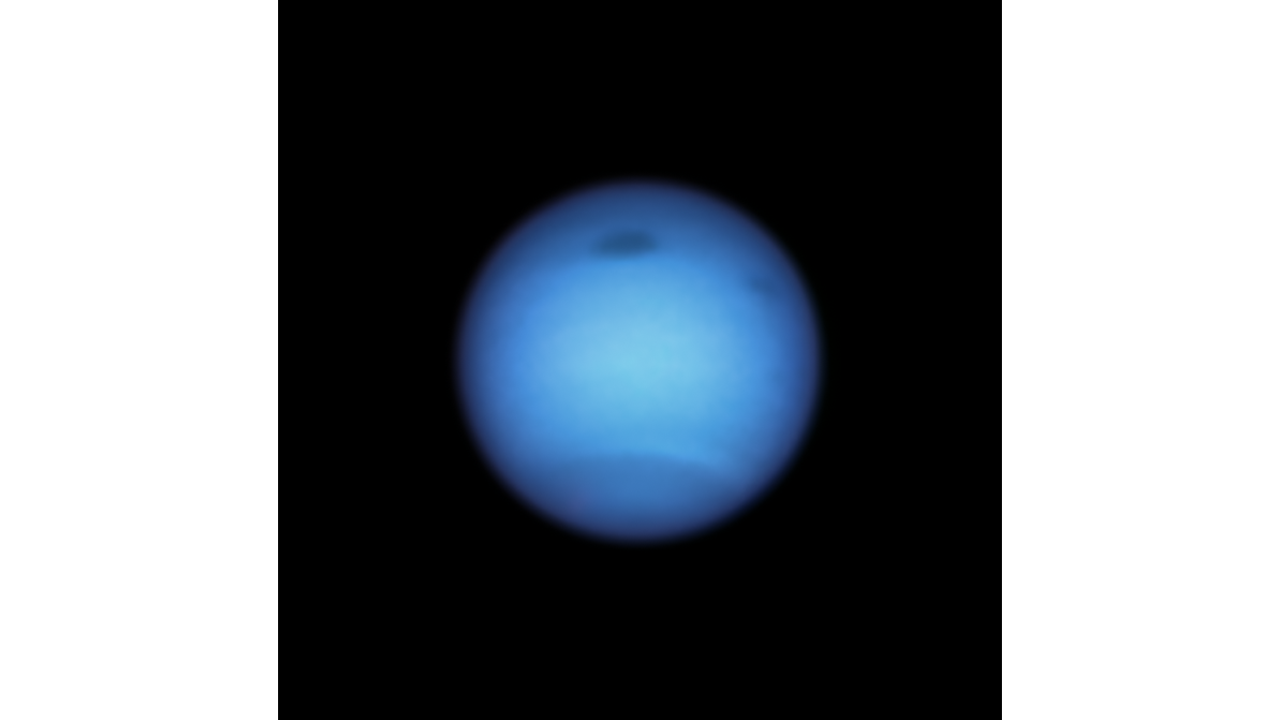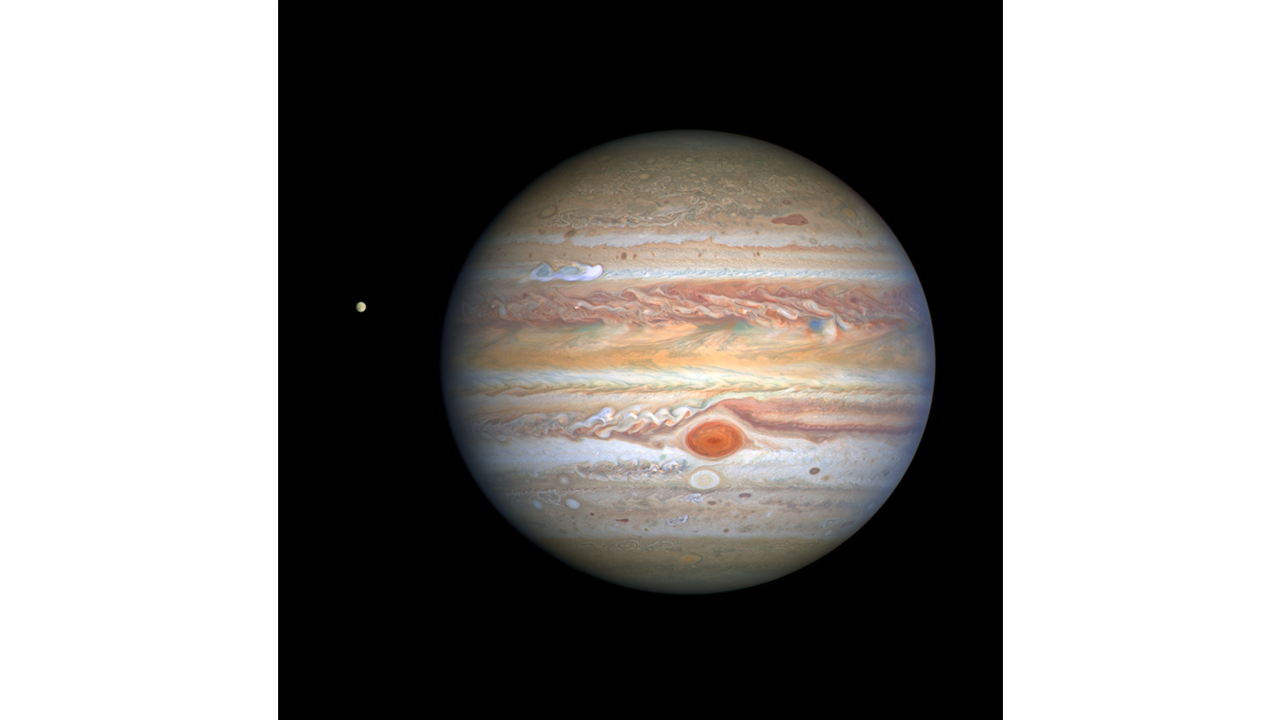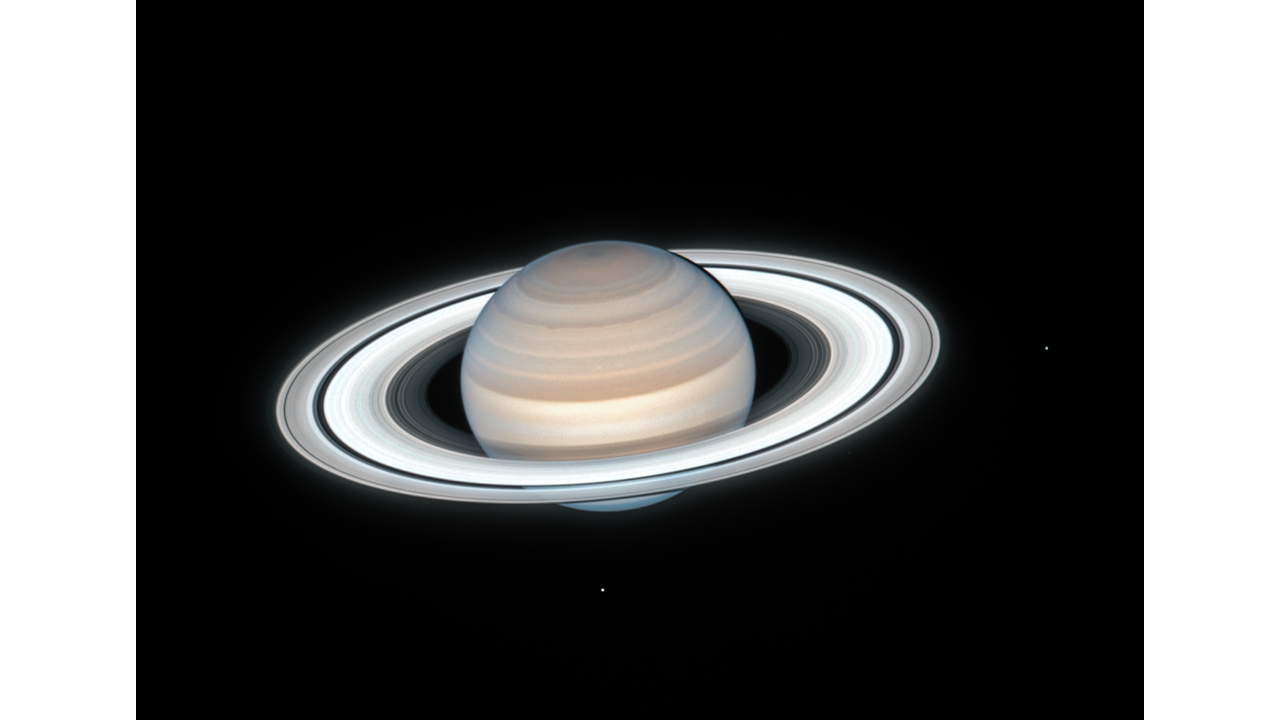Using Hubble, astronomers have discovered that Jupiter’s Great Red Spot (GRS) is not as stable as it might look. Hubble measurements of the GRS’s size, shape, brightness, color, and vorticity showed it can change dimensions—looking like a slightly skinnier or fatter red oval over 90 days.
Tag: OPAL program

Dark Storm on Neptune Reverses Direction, Possibly Shedding a Fragment
A giant dark storm on Neptune heading for certain doom at the equator mysteriously halted its journey and began drifting in the opposite direction. Almost simultaneously, another smaller dark spot appeared nearby, only to vanish months later. Hubble astronomers are presenting these findings today at the Fall 2020 American Geophysical Union meeting.

Hubble Captures Crisp New Portrait of Jupiter’s Storms
More massive than all the other planets combined, Jupiter truly is the king of our solar system. The swirling clouds, arranged in colorful, banded structures, change from year to year. The rich colors are produced by trace compounds in Jupiter’s predominantly hydrogen/helium atmosphere. Hurricane-force winds propel these clouds, and upwelling currents are ablaze with lightning bolts far more powerful than those seen on Earth.
The Hubble Space Telescope serves as a “weather satellite” for monitoring Jupiter’s stormy weather. The iconic Great Red Spot, a storm big enough to swallow Earth, shows that it’s shrinking a little in the Hubble images, but it still dominates the entire southern atmosphere, plowing through the clouds like a cargo ship.
Hubble astronomers patiently wait to get close-up snapshots as Earth make its nearest annual approach to Jupiter – an astronomical alignment called an opposition, when Jupiter is on the opposite side of the Earth from the Sun.

Hubble Sees Summertime on Saturn
Hubble photographed Saturn and its rings on July 4, during summer in Saturn’s northern hemisphere. This image is taken as part of the Outer Planets Atmospheres Legacy (OPAL) project. OPAL is helping scientists understand the atmospheric dynamics and evolution of our solar system’s gas giant planets.